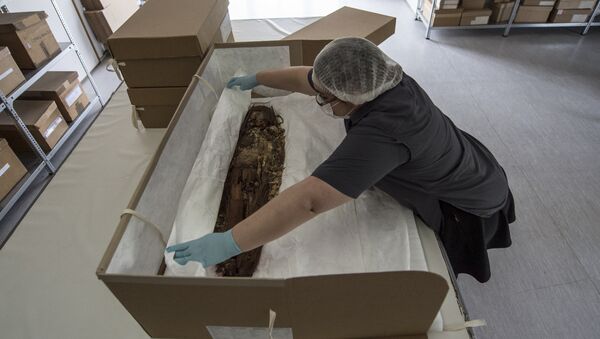Many tend to think the oldest, rarest mummies hail from Egypt, the iconic Valley of the Kings, right? Wrong!
The first humans known to have mummified their dead did so in the driest place on Earth – the coastal bays of the Atacama Desert in Chile.
The Chinchorro people developed a technique for mummification in around 5,000 BC, approximately 2,000 years before the ancient Egyptians started mummifying their elite pharaohs.
Surprise! The world's oldest mummies are not in Egypt — CNN — Surprise! The world's oldest mummies are not in Egypt CNNThe Atacama Desert of Chile is believed to hold the world's oldest mummies. Find out about the mysterious Chinchorro people and their practices… —… pic.twitter.com/u0JhxLHgEm
— NewsB2 — follow us! (@News__B2) May 1, 2019
The Chinchorro people were pre-ceramic hunter-gatherers, and although little-known even inside Chile, the country hopes a UNESCO application for World Heritage Site status (the sites are on UNESCO's Tentative List) may finally bring them into the spotlight.
Situated in the Azapa Valley is the San Miguel de Azapa Archaeological Museum in the small village of San Miguel de Azapa.
READ MORE: 'One of MOST EXCITING Discoveries': STUNNING Artefacts Spotted in 2,000 YO Tomb
This institution holds the mummified remains of some 300 Chinchorro people, though it only displays about 10% of its collection for public view, since the museum lacks the funding and space to showcase the entire collection properly.
"It's a very sacred collection because the majority of the items are related to the ceremony of death," explains curator and conservationist Mariela Santos.
Both were typically stuffed with sticks and reeds, adorned with wigs, and masked with clay over the faces.
It was a German archaeologist, Max Uhle, who first discovered the mummies a century ago near the beach in Arica that was to give them their name: Chinchorro.
READ MORE: Russians Find Unique Burial Site In Egypt, Dating 1,500 Years
Up until recently, the Chileans themselves haven't given much value to the treasures along their northernmost frontier.
However, this is likely to change as Chile seeks World Heritage Site status for the Chinchorro sites. The proposal is to be submitted to UNESCO by as early as 2020.
In the run-up to the bid, the local government has beefed up its efforts to both promote archaeological tourism and encourage local communities to take pride in being custodians of the Chinchorro burial sites.



